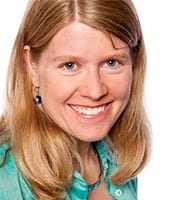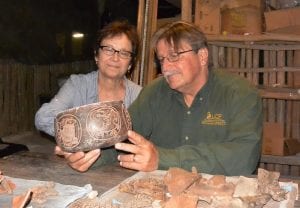Distinguished Speaker Wins Big for Anthropology
 2015-16 COS Distinguished Speaker Series participant, Sarah Parcak, Ph.D., won the 2016 TED Prize for her work on archeological sites in the Middle East and around the globe. As a satellite archeologist, she is known for discovering, analyzing and preserving archaeological sites by using satellite and infrared imagery.
2015-16 COS Distinguished Speaker Series participant, Sarah Parcak, Ph.D., won the 2016 TED Prize for her work on archeological sites in the Middle East and around the globe. As a satellite archeologist, she is known for discovering, analyzing and preserving archaeological sites by using satellite and infrared imagery.
Dr. Parcak was the 1st speaker of the 2015-2016 COS Distinguished Speaker Series, with her presentation “A Digital Revolution: Archeology from Space”. She shared how new satellite technologies are helping us rewrite ancient history, while also describing how archeologists are using satellites to stop looting in the Middle East.
The TED prize is awarded once a year to an individual with an innovative idea and vision hoping to generate global change. This person is granted $1 million to launch and fund their project. Dr. Parcak was interviewed and featured in an article on Forbes.com, that discussed her TED prize and admirable work as an archeologist.
 Arlen Chase, Ph.D., associate dean of the College of Sciences and Pegasus professor of archeology, was quoted in this article.
Arlen Chase, Ph.D., associate dean of the College of Sciences and Pegasus professor of archeology, was quoted in this article.
Dr. Chase explained that Parcak’s work in remote sensing “has always been at the forefront of the field of archaeology. Her satellite research goes beyond simply looking at imagery; she also uses spectral and chemical signatures to aid in her interpretations.”
His primary focus of research is on the ancient Maya of Central America. He also uses satellite technology to find and report ancient Mayan grounds.
Dr. Chase feels that Dr. Parcak’s research “holds the greatest promise in the New World for helping understand and protect the many ancient sites and cities that occur in dry and treeless environments in parts of Peru, Bolivia, and Chile.” and in the Old World “her work will help prevent the extensive looting that has been occurring in the Middle East.”
Dr. Parcak will attend the 2016 TED conference, on February 16th, to reveal her project to the world.
To read the Forbes.com article click here.
